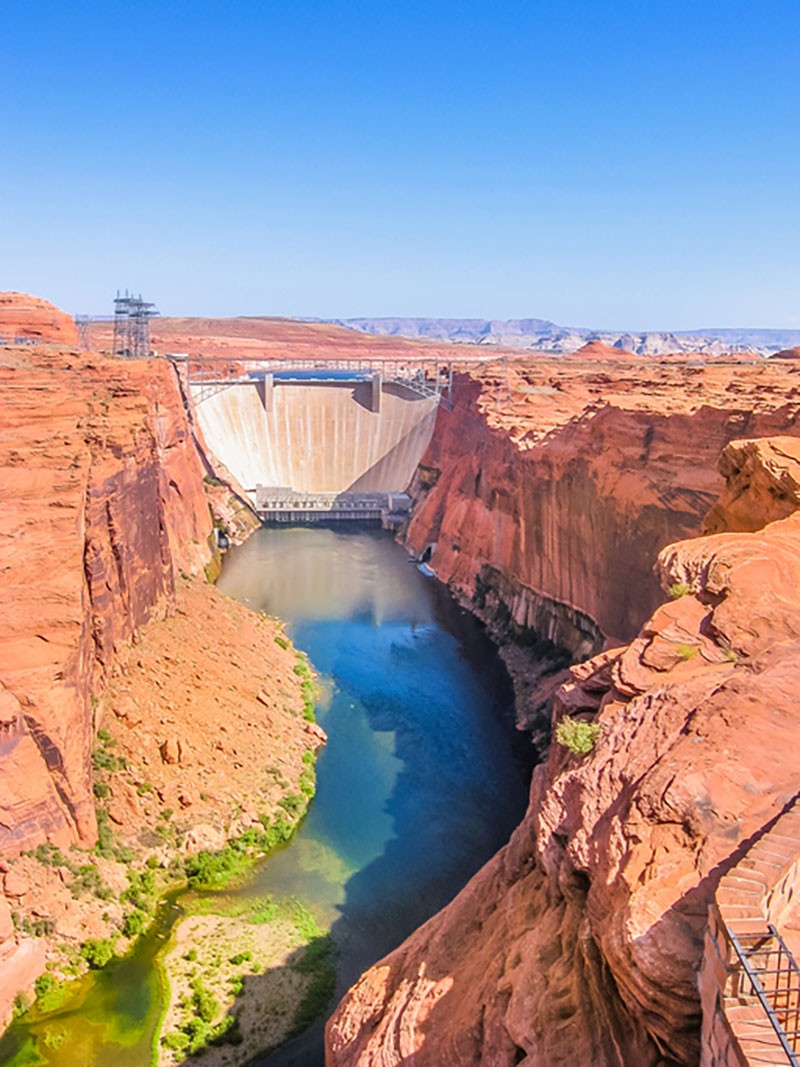New Research Injects Tough Dose of Reality for Future of the Colorado River
By Lael Gilbert |
A new white paper from the Center for Colorado River Studies encourages innovative thinking about how to sustainably manage the water supply in the Colorado River, while prompting negotiators of new agreements to consider other important factors like native fish and hydroelectricity.
A century ago, seven young western states took the first steps toward agreeing on a shared plan for the water supply provided by the Colorado River. That fledgling agreement—the Colorado River Compact—began a process that now includes a bi-national treaty, Supreme Court decrees, federal and state laws and multiple administrative agreements collectively known as the Law of the River.
At the time, runoff in the watershed was unusually high, and negotiators assumed they were dividing up a “pie” that was quite large—17-million-acre-feet or more per year. Today, scientists and water managers realize there is much less water available than once thought. The Colorado River basin has been in the throes of a drought that has persisted since 2000, and rising temperatures caused by climate change have decreased runoff as more water is pulled back into the atmosphere through evaporation and transpiration.
It is difficult to predict future runoff with precision, but there is little doubt there will be much less water to distribute than was imagined a century ago. This reality must be addressed, according to a new white paper from Utah State University’s Center for Colorado River Studies (CCRS) in the S.J. & Jessie E. Quinney College of Natural Resources.
The Law of the River may need more than a quick tune up, according to the research. The objective of the white paper is to prompt broad thinking about how to sustainably manage the water supply in the Colorado River, while encouraging negotiators of new agreements to consider their effects on other factors like native fish and the production of the hydroelectricity produced at dams.
Lead author Kevin Wheeler and his colleagues introduce a wide variety of alternative management paradigms that offer significant modifications or entirely new approaches to status quo—for instance, eliminating the management of water divvied up between Lake Powell and Lake Mead, and instead thinking about them as one giant system.
“The good news is that it may be possible to sustainably use the water supply provided by the river, but the challenge is that we all will have to use less,” said Jack Schmidt, director of the Center for Colorado River Studies and coauthor on the paper. “Decisions about which reservoirs to emphasize for water storage and how much water to release downstream will not only affect water supply, but also river ecosystems. Declining runoff will force us to confront how much water we use and what kind of river ecosystems we wish to have in the future.”
The report’s authors suggest that the present challenge regarding water management in the face of on-going drought and a warming climate is likely to require significant changes to the Law of the River.
“Incremental steps may not be sufficient to meet the challenges of the future,” said Wheeler.
This research has already triggered significant media coverage and manager attention. Outlets from High Country News to American Rivers have cited the study as an important consideration as agencies and governments begin to negotiate their assumptions for the revamp of the Law of the River.
Challenges to water management on the Colorado River in the face of drought and a warming climate are likely to require significant changes to established management paradigms, according to a new white paper from the Center for Colorado River Studies.
WRITER
Lael Gilbert
Public Relations Specialist
Quinney College of Natural Resources
435-797-8455
lael.gilbert@usu.edu
CONTACT
Jack Schmidt
Director of the Center for Colorado River Studies
S.J. and Jessie E. Quinney College of Natural Resources
jack.schmidt@usu.edu
Traci Hillyard
Administrative Assistant
College of Science
435-797-2478
traci.hillyard@usu.edu
TOPICS
Research 879stories Environment 263stories Water 261stories Sustainability 145stories Rivers 101stories Conservation 82storiesComments and questions regarding this article may be directed to the contact person listed on this page.









